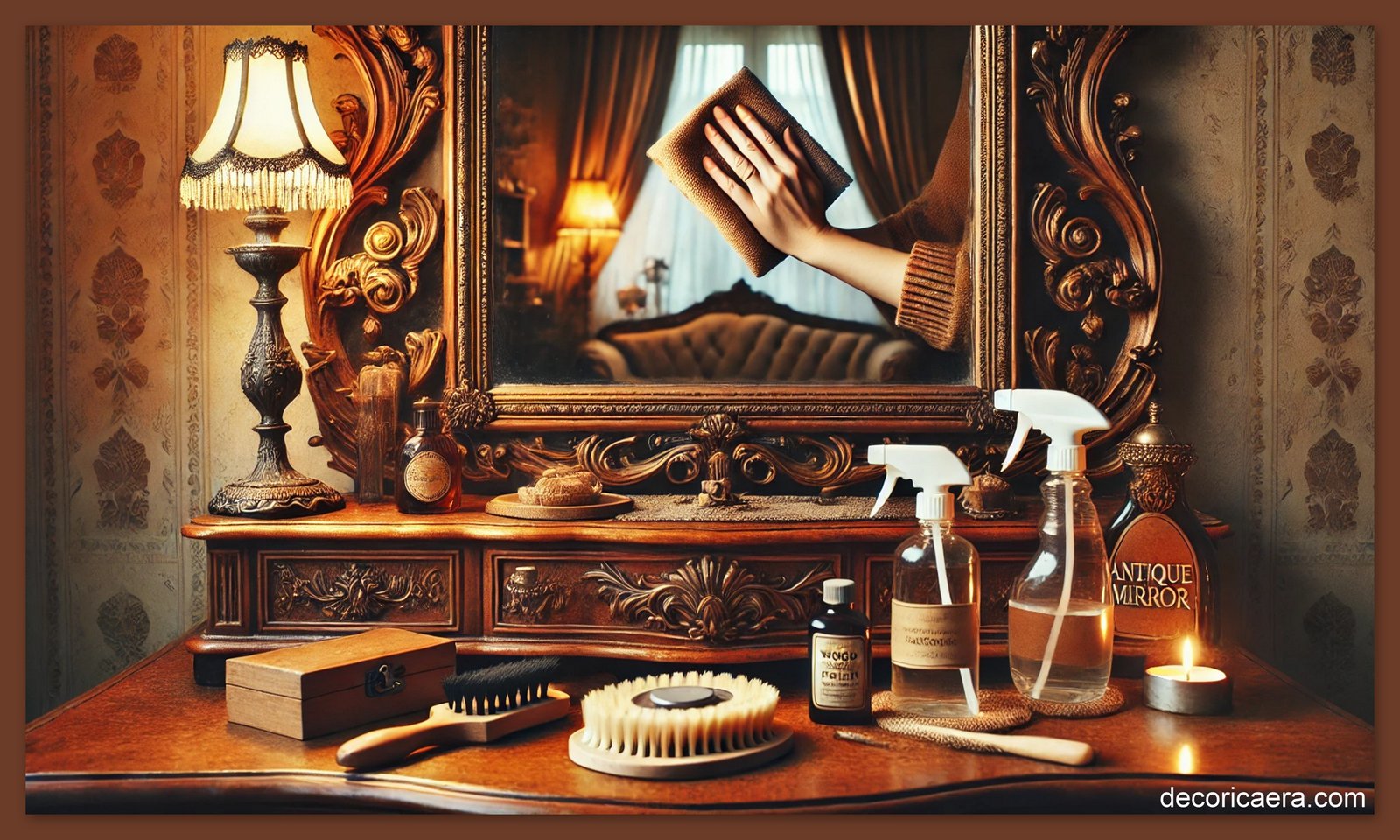Top Tips for Protecting Antique Mirrors from Aging
Introduction
Antique mirrors add a touch of elegance and history to any space, but their delicate nature makes them prone to aging. Over time, silvering can deteriorate, glass can develop hazy spots, and frames may weaken. If you own a vintage mirror, proper care is essential to maintain its beauty and value.
In this guide, we'll explore the best tips to protect your antique mirrors from aging, ensuring they remain a timeless part of your decor.
Table of Contents
1. Understand the Aging Process of Antique Mirrors
2. Cleaning Without Causing Damage
3. Preventing Moisture and Humidity Damage
4. Proper Placement and Storage Tips
5. Handling and Transporting with Care
6. Restoration vs. Preservation: What to Choose?
7. Pro Tips for Long-Term Mirror Maintenance
8. FAQs on Antique Mirror Care
1. Understand the Aging Process of Antique Mirrors
Antique mirrors are made using a silvering process where a reflective layer of silver or mercury is applied to the back of the glass. Over time, this layer can deteriorate due to oxidation, moisture, and exposure to chemicals. The common signs of aging include:
· Black spots or dark patches—caused by the breakdown of the silvering layer.
· Cloudiness or haziness—often due to trapped moisture or dirt.
· Peeling or flaking of the reflective layer – Happens when the backing wears off.
Understanding these aging signs can help you take proactive steps to slow down the deterioration process.
2. Cleaning Without Causing Damage
Regular cleaning is crucial, but harsh chemicals can damage an antique mirror. Follow these steps for safe cleaning:
How to Clean an Antique Mirror Safely
1. Use a soft, lint-free microfiber cloth—avoid rough materials that could scratch the glass.
2. Dampen the cloth slightly with distilled water—avoid using tap water, which can leave mineral deposits.
3. Apply a gentle glass cleaner (ammonia-free)—harsh chemicals can degrade the mirror's silvering.
4. Wipe gently in circular motions—don’t press too hard to prevent damage.
5. Dry immediately with a separate soft cloth—prevents streaking and moisture buildup.
Pro Tip: If the frame is made of wood or gilded, avoid direct contact with water to prevent warping or flaking.
3. Preventing Moisture and Humidity Damage
Excess moisture is one of the biggest enemies of antique mirrors. To protect against humidity damage:
· Keep mirrors away from bathrooms and kitchens—these areas tend to have high humidity levels.
· Use a dehumidifier if necessary—this is especially helpful in humid climates.
• Maintain adequate ventilation—Effective airflow helps to avoid moisture accumulation.
• Protect the mirror backing—A sealed backing can guard against the oxidation of the silver layer.
Pro Tip: If you notice condensation forming on the mirror, wipe it off immediately to prevent long-term damage.
4. Proper Placement and Storage Tips
Where you place and store your antique mirror plays a crucial role in its longevity.
Best Placement Practices
✔ Avoid placing mirrors in direct sunlight—ultraviolet rays can lead to discoloration and fading.
✔ Avoid placing mirrors near heat sources—fireplaces and radiators can cause expansion and contraction, leading to cracks.
✔ Mount securely on a stable wall—Ensure the frame is well-supported to prevent stress on the glass.
Storage Tips for Antique Mirrors
• Place the mirror down flat with the reflective surface facing upwards if you are storing it for a short period.
· Wrap in soft padding like a cotton sheet or bubble wrap to prevent scratches.
· Store in a climate-controlled environment to avoid extreme temperature changes.
5. Handling and Transporting with Care
Antique mirrors are fragile, and improper handling can lead to damage. Here’s how to move them safely:
· Always hold the mirror by the frame rather than the glass.
· Use gloves to avoid fingerprints and oils transferring onto the glass.
· Transport in an upright position to prevent pressure on the glass.
· Secure with padding if moving long distances.
Pro Tip: If the mirror is large or particularly valuable, consider professional movers specializing in antiques.
6. Restoration vs. Preservation: What to Choose?
If your antique mirror is already showing signs of aging, you might wonder whether to restore or preserve it.
Preservation:
· Ideal for mirrors with historical or sentimental value.
· Involves cleaning, sealing, and preventing further damage.
· Best for collectors who prefer the authentic, aged look.
Restoration:
· Suitable for mirrors with severe damage.
· Can involve re-silvering, repairing cracks, or replacing broken frames.
· May affect the mirror’s value if not done professionally.
Pro Tip: Always consult an antique restoration expert before making any modifications.
7. Pro Tips for Long-Term Mirror Maintenance
✔ Check the backing regularly for signs of peeling or damage.
✔ Avoid touching the glass surface with bare hands to prevent oil buildup.
✔Use museum-grade wax on wooden or gilded frames for extra protection.
✔Inspect for loose joints or weak spots in the frame to prevent future accidents.
8. FAQs on Antique Mirror Care
Q: Is it safe to clean an antique mirror with vinegar?
A: It’s advisable to steer clear of vinegar since its acidic nature may damage the silver backing over time.
Q: How do I fix black spots on my antique mirror?
A: Black spots result from silvering breakdown. While they can't be fully reversed, re-silvering by a professional is an option.
Q: Should I replace the antique glass if it's cracked?
A: If maintaining authenticity is important, try to repair rather than replace. However, if safety is a concern, consult a restoration expert.
Q: How often should I clean my antique mirror?
A: Light dusting weekly and a gentle wipe-down every few months is sufficient.
Conclusion
Antique mirrors are timeless treasures that require delicate care to prevent aging. By following these tips—proper cleaning, humidity control, careful placement, and mindful handling—you can ensure your vintage mirror stays beautiful for generations to come. Do you possess an antique mirror that comes with an intriguing tale? Share it in the comments below!







